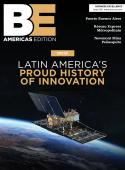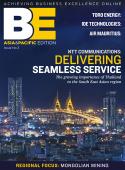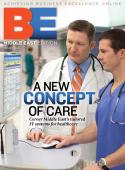
A Lens Made of Steel, Stone, and Light
On Los Angeles’s Miracle Mile, the Academy Museum of Motion Pictures gleams like a camera turned inside out.
One side preserves history: the restored 1939 May Company Building, reborn as the Saban Building.
The other side projects the future: a spherical, glass-domed theater that seems to float above the city.
Together they form a 300,000-square-foot cultural campus dedicated to the art and science of movies—a union of architecture, engineering, and craftsmanship.
Behind this cinematic vision stands not one architect, but an ensemble of designers, engineers, builders, and suppliers who turned a daring concept into reality.
Vision and Challenge
The Academy of Motion Picture Arts and Sciences set out to create the world’s foremost museum devoted to film. Their brief to Renzo Piano Building Workshop and Gensler was as poetic as it was technical:
restore a beloved Art Deco landmark while creating a new building that could perform like a concert hall, withstand earthquakes, and glow like a lantern.
The team faced dual challenges—preservation and performance. The historic limestone, granite, and gold-mosaic façade of the May Company had to be conserved with surgical precision.
Next door, the new David Geffen Theater sphere had to house a 1,000-seat cinema capable of world-class sound and projection, suspended within one of Los Angeles’s most complex seismic environments.
Meeting that brief required a coalition of excellence.
The Collaboration Network
Every phase of the project reflected deep partnership.
-
Architects & Engineers: Renzo Piano Building Workshop led design; Gensler managed execution. Buro Happold engineered structure, MEP, and sustainability systems, while KPFF handled civil works.
-
Specialists: Jaffe Holden and Arup fine-tuned acoustics and theater design; Knippers Helbig advised on façades and glazing systems.
-
Builders: Morley + Taslimi JV managed early phases; MATT Construction led final restoration and sphere construction.
-
Manufacturers & Fabricators: Willis Construction produced 117,000 sq ft of architectural precast panels; DBM Vircon provided digital steel and precast modeling; Eastman supplied high-performance laminated glass for the dome.
Each partner brought a piece of the film reel that would become a living museum.
Inside the Supply Chain — Scenes from the Build
1. Restoring the Saban Building
The original May Company structure is a masterclass in adaptive reuse.
MATT Construction’s restoration teams retained 95.7% of the limestone, 51% of the granite, and 65% of the gold-glass mosaic tiles, meticulously cleaned and reinstalled.
Where replacements were needed, the tiles were sourced from the same Venetian family-owned manufacturer that created the originals in the 1930s—each piece containing 24-karat gold leaf.
Buro Happold integrated modern HVAC, electrical, and life-safety systems without disturbing the building’s historic proportions.
The result: a 1930s landmark reborn to contemporary museum standards while retaining its cinematic sheen.
2. The Sphere — Engineering the Impossible
Beside the Saban Building stands the David Geffen Theater, a 40,000-sq-ft spherical volume that appears to levitate.
Inside the shell sits a “box-in-box” theater, acoustically isolated and supported by just four plinths resting on eight base isolators, positioned 15 ft above grade to absorb seismic energy.
It is both sculpture and structure: an architectural illusion grounded in rigorous engineering.
Willis Construction fabricated over 117,000 sq ft of curved precast panels for the sphere, each set within tolerances of millimeters.
DBM Vircon’s digital modeling ensured the panels, steel frame, and glass canopy aligned perfectly—no second takes required.
3. The Room That Disappears
Inside the theater, silence is the star.
Jaffe Holden designed acoustic isolation that keeps city noise at bay, while Arup optimized sightlines, projection, and rigging for everything from film premieres to live orchestral performances.
The result is a room that vanishes, allowing soundtracks and dialogue to exist in pure focus.
4. Services and Comfort
Buro Happold’s MEP design delivers controlled precision.
HVAC and power systems are zoned to maintain gallery conservation conditions and event-level comfort, while reducing energy use.
This meticulous integration contributed to the project’s LEED Gold certification.
5. Construction as Collaboration
The early phases managed by Morley + Taslimi JV—hazmat removal, seismic upgrades, and enabling works—prepared the way for MATT Construction’s final build.
Digital coordination between the two ensured continuity of design and delivery.
In effect, one film, two directors, same script.
Innovation and Sustainability
Sustainability began with reuse.
By preserving the majority of the 1939 building envelope, the project saved thousands of tons of embodied carbon.
The sphere’s seismic isolation protects the structure and reduces the need for post-quake repairs.
Mechanical systems are fine-tuned for efficiency, and the Dolby Family Terrace—beneath its shimmering glass dome—provides a naturally ventilated gathering space that connects city and skyline without heavy energy loads.
Voices of Excellence
“We designed the theater to behave like a finely tuned instrument—stable, quiet, and resilient—while the museum around it stays light on its feet.”
— Buro Happold, Structural and MEP Engineer
“Preservation is logistics plus empathy. Saving ninety-five percent of a limestone façade is as much about sequencing and temporary works as it is about cleaning stones.”
— MATT Construction, Restoration Team
“Every precast panel was a close-up; tolerance was the plot.”
— Willis Construction, Precast Fabricator
Legacy and Future Impact
The Academy Museum opened in September 2021, with a total project value of roughly $388 million and an area nearing 300,000 sq ft.
It instantly became Los Angeles’s new cultural landmark and the world’s foremost institution devoted to cinema.
Beneath the red carpets and premieres lies a quieter triumph: a supply chain that fused preservation, technology, and artistry into one seamless performance.
From stone masons to steel modelers, every contributor helped script a new chapter in Hollywood’s own architectural story.
“Infrastructure is more than steel and sensors,” says the museum’s operations team. “It’s the collective intelligence of hundreds of companies learning and building together.”
The Academy Museum stands as proof that architecture, like cinema, is a collaborative art form.
Supplier Spotlights
Buro Happold — Seismic Calm
Eight base isolators on four plinths decouple the Geffen Theater from earthquake motion, allowing the sphere to “float” safely above the plaza.
MATT Construction — Heritage Saved at Scale
95.7% limestone, 51% granite, and 65% gold mosaic retained—conservation at an architectural level few projects attempt.
Willis Construction — Precast as Couture
117,000 sq ft of sculpted precast panels shaped the sphere’s distinctive shell.
DBM Vircon — Digital Precision
Model-based coordination synchronized steel and concrete geometries to millimeter accuracy.
Jaffe Holden + Arup — The Perfect Soundstage
Acoustics and theater design deliver a world-class cinematic experience adaptable to live performance.
Knippers Helbig — The Transparent Envelope
Façade consulting balanced daylight, structural weight, and acoustic separation under the dome’s glass canopy.









